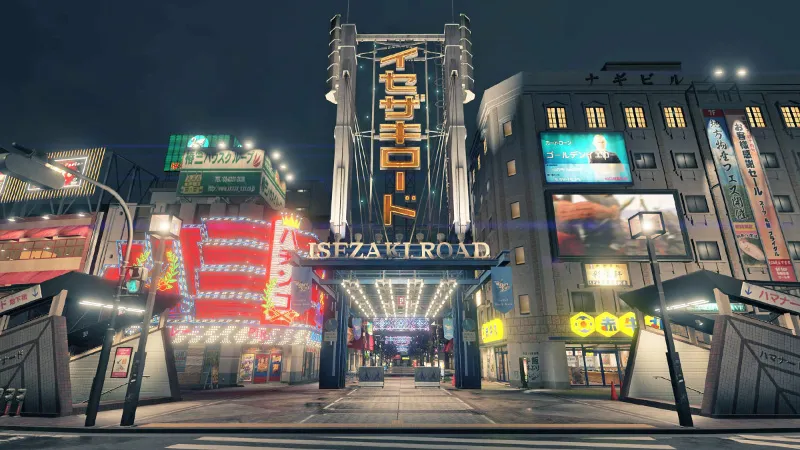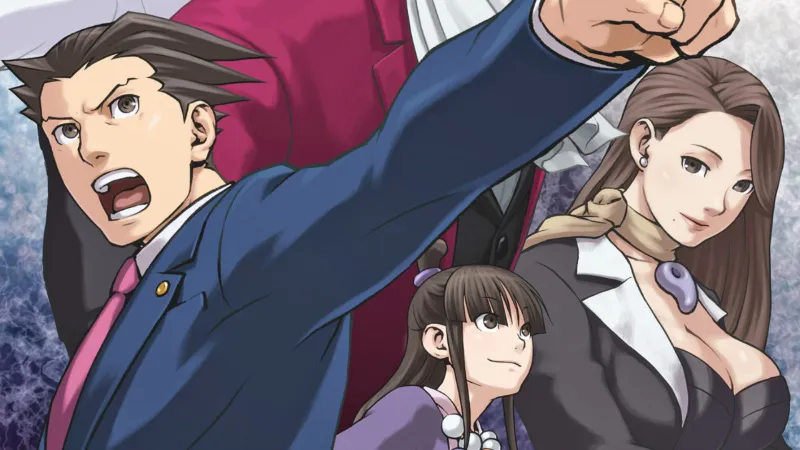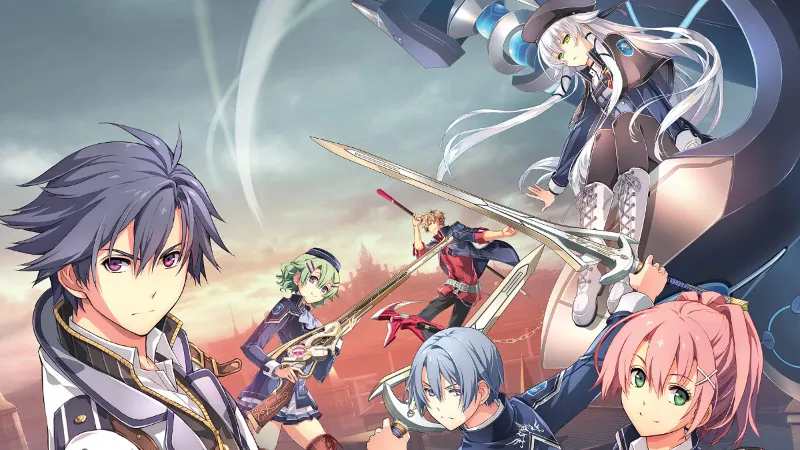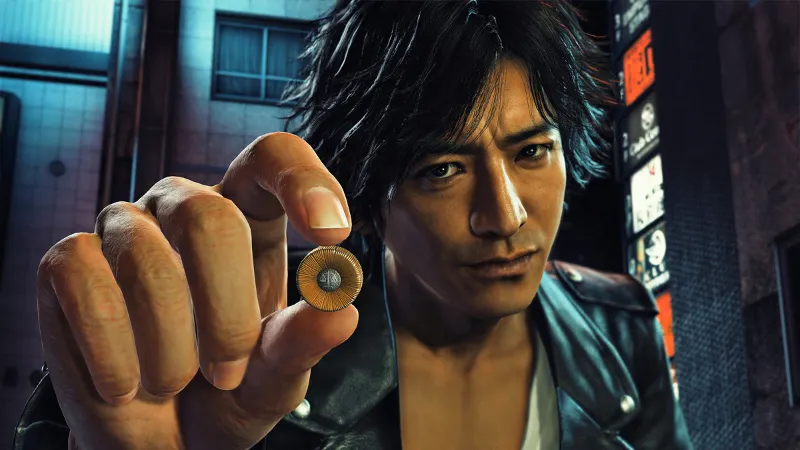The Trials And Tribulations Of Video Game Localization

Introduction
How does a video game from another region make it into your hands, and how do companies ensure you’re getting an experience that lives up to the original? Localization of video games is becoming more relevant as the game industry expands. It is a complex process that few people understand. There are many things to consider when releasing a game in another country.
When a game is localized well, it’s free of typos and grammatical errors, the dialogue is natural, and the instructions make sense. But even this is skimming the surface of the localization team’s role in the process. As games become more complex and text-heavy, not only do the challenges continue to grow, but the quality bar – and our expectations – constantly rise. There’s now a larger focus on the ways games are adapted from their origin for our consumption. It’s a rightful focus, since poor localization can make a game less enjoyable. Or it can live on in jokes and memes, like Zero Wing’s “All your base are belong to us!” or Final Fantasy IV’s “You spoony bard!”
These days, we don’t see as many hilarious blunders, despite receiving games that are much more complex and challenging to bring to a Western audience, such as the Yakuza series, where Japanese culture is integral to its identity. To learn about localization and all its difficulties, we spoke to nine people who were involved in series like Ace Attorney, Nier, or SMT. They discussed everything, from the reasons direct translations don’t work to the challenges of adapting specific language puzzles.
Lost In Translation
Translation lost
Every language comes with its own set of rules and complexities. What’s acceptable and understandable in communication differs depending on the region. In Japan, for example, there are many hierarchical signposts that show respect. However, this can sound awkward when it is translated to English. When accepting a task from a superior, English speakers don’t say things like, “I humbly accept.”
Japanese also doesn’t require the same kind of explicit context that English does; sentences often don’t have a subject, object, or other information necessary in English. “It’s because Japanese is a high context culture, whereas English is a low context culture,” explains Sega Lost Judgment producer Scott Strichart. “Japanese expects you to understand the implication of a sentence. There’s a lot of other stuff under the hood in Japanese culture; you just naturally can appreciate when someone says something. They don’t speak directly about people often. There’s no subject, so to speak.”
And then there’s the issue of how different cultures view certain terms. “A word’s dictionary definition and its actual usage and the image it conjures up for a native speaker can be very different at times,” says Capcom localization director Janet Hsu. “An example is the English word ‘animation’ being shortened to anime in Japanese, and then getting re-imported into English as ‘anime.’ The Japanese word [means] ‘any kind of animation,’ including cartoons, but in English, the word “anime” is strictly reserved for Japanese animated works. Now, imagine trying to directly translate whole concepts and trains of logic from one language into another, and you can see how things can quickly go off the rails.”
It’s important to look at how languages differ because little things have huge consequences in the process. Localization is a hot topic right now. The main debate revolves around translation, and whether it’s faithful to its source. Many localization professionals are accused of taking unnecessary liberties or not providing a true experience for their customers. It is here that most misinformation originates. Localizers are familiar with all kinds of misconceptions, from those who assume Google Translate can handle the task to those who fear censorship because Google Translate has made alterations for Western sensibilities. However, the biggest request from gamers is often for a “direct translation.”
Direct Translation: The Problem
Problem with Direct Translations
Direct translation is something that many localization professionals will not admit to being their work. “Literal translation does not exist because translating is a creative venture,” says freelance localization editor Derek Heemsbergen, who worked on Dragalia Lost and Sakuna: Of Rice and Ruin. “When people talk about direct translation, what they mean is literal translation in as much as translation can be literal. They want Japanese grammar and idioms preserved as one-to-one as possible, and that makes for really clumsy text and writing.”
Literal translation does not exist because translating is a creative venture.”
The message or intent can be altered by direct translations. Jessica Chavez, a freelance localization writer, who was previously on staff at Xseed Games and most recently worked on Mistwalker’s Fantasian mobile game, affirms that not everything translates. “There’s a really famous example of Kentucky Fried Chicken back in the ’80s when they decided to release their product in China,” she says. “They really wanted to keep their slogan; it’s something that’s really iconic. Everybody knows it’s ‘finger lickin’ good,’ right? They translated it directly. And in Chinese, it came to, ‘eat your fingers off.’”
While this is a great example of the value and importance of localization teams, most people don’t know what it really means. John Ricciardi (founder of 8-4), says that the aim is to maintain the intention and feel. “We try to preserve the experience so that people, when they’re playing it in English or vice versa, are basically getting the same feelings and having similar reactions. And I feel like if we’ve done that, then we’ve done our job. It’s not about having one-to-one word [translations]Because there are no single-to-one words. That’s the great myth. Many people believe that translation is easy. They can simply put the text into a computer and get it back. It doesn’t work that way.”
Chavez shares a similar sentiment. “My personal philosophy is intent and meaning over a literal translation,” she says. “The whole goal for teams when they’re making these games and they’re releasing it in another country is they want to deliver the experience; they want players to laugh at the parts that they wrote that were funny. Players should feel the same emotions as their audience. I think it’s our job to communicate that, and a literal translation is going to lose that.”

Yakuza: A Dragon’s Eye View
Chavez shows how cultural customs regarding the delivery of babies can cause things to change during localization. Momotaro in Japan is a folktale character who was brought up from the giant peach. Although this story is often used to explain that babies can be born from floating fruits, it is also common in American culture for storks to deliver babies. “So we’re delivering the same intention, this folktale way of how babies are delivered, but we’re making it make sense for a Western audience. If you directly translate that, you’re going to lose what the dev team is trying to convey.”
Of course, it helps that people are more aware of Japanese culture and common phrases nowadays, but it’s still a tricky line to walk to ensure an English player understands the meaning. Japan is an integral part of the Yakuza and Judgment series. “It’s a balance between authenticity, accuracy, and clarity,” Strichart says. “I think someone who goes in to play Yakuza, we have to expect that what that player wants to get is a somewhat foreign experience; they want a game about Japanese people to feel like it’s about Japanese people.”
Strichart said that the team is cautious not to over-localize. However, he does wonder if Americans will be able to identify Tonkotsu Ramen or whether it should be replaced with pork broth ramen. To solve the problem, it is helpful to have additional text. If there is an equivalent in English, it will be used by the team for better understanding. Strichart says when something is changed, it’s in order to ensure the player can understand the content; the team strives to avoid over-explaining things. “We make sure that we never forget that [these games are] set in Japan,” he says. “And that it feels like it is Japanese, despite being in English.”
Getting creative
Getting creative
Localizers use their skills in a wide variety of ways, as it’s their job to solve for anything that could be problematic. This can range from thinking of different ways to get a character’s personality across to making a puzzle or riddle work in a language it wasn’t designed for. Every game is unique and presents different challenges.
Strichart has spent the last seven years working on the Yakuza series, and anyone who has played the games knows they’re rife with minigames, but some minigames just don’t work if you try to translate them directly. “There are chat minigames where you have to form words together or give responses to sentences that if you didn’t translate them correctly, the wrong answer is too obvious or the right answer isn’t obvious enough. Sometimes these minigames have to go through a lot more localization than we would just taking words from the page.”
Sometimes you have to concede defeat. Strichart refers to Mahjong in Asia, which is a tile-based game. “There’s nothing more fun and kind of humorous than the [Western] Yakuza audience interacting with Mahjong, who are just like, ‘I don’t touch it.’ Or people who are trying to get into it and trying to understand it and still can’t. This gap can only be bridged so far. Over the years, we’ve added little numbers to indicate what the tiles are. We’ve added increasingly complex and massive tutorials to the game where we’re trying to make it as accessible as possible. And yet, it still remains just this wall.”

Phoenix Wright: Ace Attorney Trilogy
When puzzles use complex mechanics, it can be challenging to translate them into another language. “Because the entire gameplay of an Ace Attorney game resides in the strength of the logic in the writing, the localization itself is the gameplay, and how detail-oriented you are as a localizer will show in how playable the final product is as a game,” Hsu says. “Sure, there are some leaps in logic that the original Japanese may force the player to make. However, if the lines are translated poorly, or if the foreshadowing is not set up properly, someone playing the English version will have a much tougher time than the original Japanese version intended, and that would negatively impact the player experience.”
Hsu says some of her favorite moments from localizing the series have been finding word puzzle solutions, like Spirit of Justice’s karuta cards trick. While the English version of the cards says WHET NO 4 in English, it has a completely different message when you find the answer. “Nothing feels better than when you know you’ve finally found a truly great localization solution that will hopefully provide players with that same sense of ‘aha!’ when they solve it in English that a Japanese player had with the original version.”
Chavez can confirm that the most satisfying part of the job is solving puzzles. An unannounced accomplishment was a highlight of her recent work. “I had to translate an 11th-century poem, and I had to edit that into a code puzzle that had to be input,” she says. “So in the Japanese [version], they just had like, ‘ka ki ke ko ku,’ so they could have kind of a chanting style for it. It was difficult to translate this English poem from the 11th century into five lines. Then I needed to convert it into computer code. But it makes perfect sense. It also has a solution that changes when you reach the end. This makes it more logical. I was like, ‘I nailed this one!’ Changing a super ancient poem into a computer code was fun.”
It is not always easy to make characters come to life in another tongue. Sometimes it can prove difficult. Sega/Atlus editor Josh Malone fondly recalls Judgment as his first project and how he found the best way to portray Ryan Acosta, a foreigner-in Japan character.
“If I had gone with a one-to-one translation, Ryan would have used some corrupted form of Elizabethan English and the result would have been more like an SMT angel than a fervent otaku,” he recalls. “Instead, I had to pull a Kagutsuchi and scan his heart – what were his conversational cues trying to tell me? At that point, I started thinking, ‘Okay, this dude’s definitely a weeb, that’s what the writers were going for,’ so I took that idea and ran with it. Thankfully, his character ended up being quite well-received, so I’m glad I went out on a limb and added a bit of personal experience to his dialogue.”
For Trails of Cold Steel, the team struggled with ways to capture elder Roselia’s personality. At first, NIS America was planning on giving her have an old-timey English accent, but when the team heard it read out loud, it just didn’t feel right. NIS localizers worked to find a good way to capture the different parts of her personality, from when she’s acting more high and mystical to when she’s just being an annoyed grandma. “The sort of middle ground between those two that we reached was we limit her use of contractions for the more casual scenes, and when she’s being more fancy, she’ll speak without them,” says NIS America lead editor Eric Budensiek.

Trails of Cold Steel 3
The challenges that character counts present for localizers are not discussed often. Text has to fit within a certain amount of space per the game’s programming, frequently seen as text boxes. While sometimes programmers can make these bigger and add extra text boxes to accommodate the English language, it’s a rare luxury. “Japanese is a dense language; orthographically, there’s more information in a smaller number of [characters],” Heemsbergen explains. “So there could be a compound that’s five kanji, so only five characters displaying on the screen, but the meaning in English is something like, ‘super incredible, enchanted potion of ultimate revival,’ which is much longer.”
What makes this even more complicated is Japanese scripts are already very dense and use up the majority of space, so it’s up to localization to rewrite, trim, and condense the text in a way that gets all the information across and fits into a smaller amount of space. They must do this within tight timeframes.
Beware of Pressure
Beware of Pressure
There are thousands of lines that need to be adjusted in games, with deadlines and cost often being a factor. Localizers must constantly weigh the pros and cons of each battle, making timely decisions. “The framework that localizers have to work with are really quite constrained,” Chavez explains. “We don’t get a lot of time on these things. So when you’re under a hard deadline, you have to choose between eloquence, or ‘does it make sense?’”
This job requires research, and often going back-and-forth with the original team to clarify and understand. Although the amount of collaboration will vary depending on which developer is involved, it appears that overall interaction has increased due to new tech that makes communication easier and more efficient. Interviewees indicated that their localization software includes collaboration tools, while others stated they maintain open communication with message boards. “There’s a misconception that the developer throws text over, we do it, they implement it, and no one reads it,” Strichart says. “There’s this constant back and forth, and it’s a very collaborative process now. It has to be, like you can’t throw text and renders and expect us to get it. Localization teams need context; that’s 100 percent of our job.”
Despite the time taken to preserve intent, the turnarounds can be brutal, and last-minute decisions – even those that seem small – can throw an entire project into chaos. Chavez first experienced this when he worked on Half-Minute Hero. After the game’s localization was complete, the development team changed the font set to something easier to read. However, changing the font style had an impact on the characters limits. The team was forced to redo all of its work in order to come up with shorter text. What’s the kicker? The deadline was one week. “I had to go through every single line in the game and either fix them or rewrite the ones that went over,” she recalls. “Luckily, it was a smaller game, and it was a completely wacky game. So it sort of worked out in the end, but there was definitely a moment where I wondered, ‘What am I doing?’”
Although deadlines are an integral part of the job. Some are more challenging than others. Lost Judgment had a very aggressive timeline, something Strichart doesn’t mince words about. “Lost Judgment was the ultimate pinnacle of challenge, just turning around that game in essentially a year with the amount of audio and languages that we had to do,” he says. “It takes its toll. Under the weight of that, you’re looking at it almost like, ‘Okay, next time, we need to not do it this way, but for this time, let’s just get it done.’”

Lost Judgement
Strichart said starting the localization process as early as they did was difficult because half the game wasn’t built yet. “For a team that was mostly used to being able to just turn on the game and see how the characters interacted, you had to go ask the developers things like, ‘How close are these two standing?’ ‘Should they be yelling?’ That was a huge learning curve for us.”
You need to be familiar with the game material in order to fully convey it. “I’ve learned the subtle flavors of whisky, the intricacies of pachislot machines, and the worst things to say to your bartender – all for the sake of crafting realistic dialogue that leaves a deep (or deeply silly) impression,” Malone says about his time working on the SMT and Persona brands alongside Yakuza and Judgment.
Chavez had to take extra care when she worked on Mario & Sonic at the Rio 2016 Olympic Games because it involved a lot of trivia. “I had to do a lot of research looking at, ‘What’s the actual world record for this?’ or ‘What’s the name of this specific area in the Amazon?’ So it took a lot of checking back and forth.” She also recalls how on Fantasian, the editor “had a heck of a time” reading very technical scientific journals to try and understand the Higgs Boson, a subatomic particle that gives other particles their mass.
A localizer’s work is far from easy, and it doesn’t help that people trying to break into the field can often be exploited. Other than not getting credit for their work in localization, it is common for them to be overlooked. [see sidebar]The demands may be quite high. “I’ve heard stories of freelancers working for other companies, and they’re being asked to do like 10,000 characters [a day], which is insane,” Ricciardi says. “Our standard for translators is like 4,000 at most, and that’s from what I’ve learned over the years is comfortable in one day for a typical Japanese-to-English translator.” Ricciardi said he’s also heard of people getting paid as low as two cents a character. Like other parts of the gaming industry, localization also has its problems and requires better solutions.
To Love Language and Games
Language and Games: For Love
It takes a lot of sweat, blood and tears to translate video games into another language. Much of that we don’t see. Many things are required of localizers: problem solvers and creative thinkers, as well as masters in language. The people who do it have an enormous task on their hands, and they don’t take it lightly. “I’ve been in the business since I was like 19, and for me, games are everything,” Ricciardi says. “I love games. I appreciate games. Respect for game developers. I want as much as possible when we’re working on this stuff to be able to preserve the integrity of what was intended with the game.”
Localizers are asked to be many things: creative, problem solvers, and masters of language, to name a few.”
Hsu sums localization up beautifully. “I like to think of localizers as bridge builders – people who help to bring entertainment from a different culture to their audience by building the smoothest bridges they can, so that as much of the experience remains intact as possible, and doesn’t get bent out of shape during transit,” she says. “Sometimes, you can reuse words from the original language to help build your bridges, and sometimes, you might need some additional context mortar to fill in the gaps and hold it all together. You might find that narrower bridges made of stone are not suitable for carts. To remedy this, expand them horizontally and add more information. Or, revise a segment to make it clearer. Each sentence is a unique bridge with a role to play over the course of the journey from the start of the game to the end.”
The original publication of this article was Issue 340.Game Informer.
#Trials #Tribulations #Video #Game #Localization








